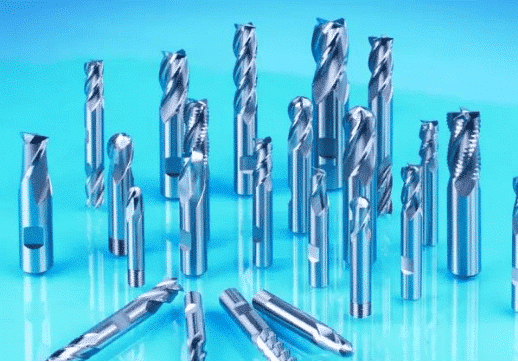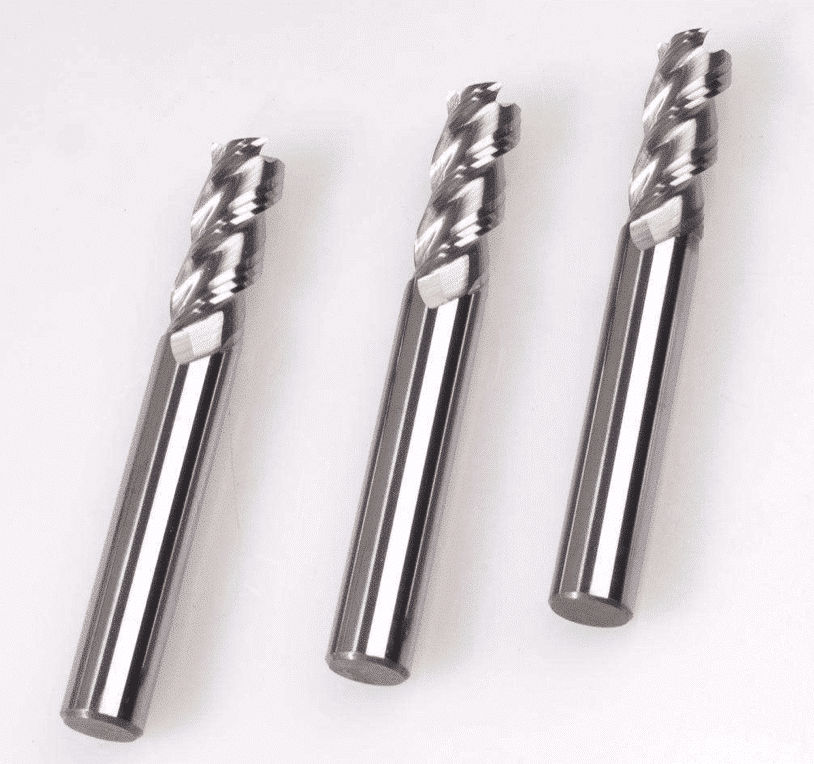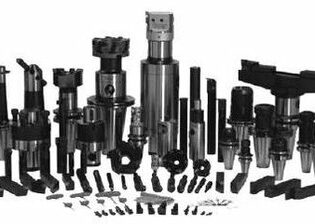Hard to Pick Out Suitable End Mills? These Basics May Help
The main cutting edge of the end mill is a cylindrical surface, and the cutting edge on the end face is a sub-blade. When the end mill without the center edge is working, it cannot make a feed motion along the axial direction of the milling cutter. End mills are currently widely used in various sectors such as automobile manufacturing, logistics, molds, machinery, etc., and because of the increasing use of various aspects, the application requirements are also increasing. Therefore, various problems that are common in the use of end mill applications are summarized and answered.

[Q] Parmak frezenin iki dişinin Ø12'si nasıl taşlanmalıdır?
[Answer] First, the sand wheel should be ground, the edge of the grinding is a little angled, the milling cutter, the blade should pay attention, the outside should be higher than the inside… The slope inside should not be too oblique, probably just like this, this still has to grind more Practice only.
[S] Parmak freze nedir ve disk frezeleme takımı nedir? Fark ne?
[Cevap] Parmak frezeler, frezeleme yuvaları için kama olukları kesiciler yerine genellikle uç yüzey frezeleme için kullanılır. Disk freze bıçağı esas olarak büyük uç yüzeyleri frezelemek için kullanılır, çünkü disk frezeleme kesicisinin düz frezelemesi genellikle büyüktür, freze ucu yüzü frezeleme için daha hızlıdır ve testere bıçağı freze bıçağı genellikle frezeleme için kullanılır.
[Q] Why can’t the end mill cut vertically?
[Cevap] Parmak freze döndüğünde, alt kenarın orta noktası nispeten statiktir. İşlenebilirliği ve talaş kaldırma özelliği yoktur, bu nedenle dikey olarak kesilemez.
[Q] How is the feed rate of the freze determined?
[Cevap] Kesme miktarı seçimi takım, iş parçası ve takım tezgahı gibi faktörlerle birlikte dikkate alınmalıdır. Parmak frezenin ana kesme kenarı çevresel kenardır. Son işlem sırasında diş başına ilerleme genellikle yaklaşık 0.1'dir. Miktar genellikle 0,25 ila 0,3 mm arasından seçilir. Özellikle, kesme hızı, eksenel kesme derinliği ve radyal kesme derinliği gibi kesme parametreleriyle eşleştirilmelidir.

[Q] Parmak freze ile bilyalı parmak freze ve seçim prensibi arasındaki fark nedir?
[Cevap] parmak frezeler ve bilyalı parmak frezeler, biri bilye kafa, biri düz dip, parmak freze esas olarak geleneksel işleme için, ve bilye ucu freze yüzey frezeleme için kullanılabilir.
[S] Parmak frezesi için pens ile musluk için pens arasındaki fark nedir? Dokunduğunuzda şirket kolunu kullanmak zorunda mısınız?
[Cevap] düz şaft uç değirmen tutmak için pens sert musluk için musluğu tutmak için kullanılabilir, ancak etkisi iyi değil, genellikle küçük çaplı musluk sorun değil; musluğun ER kovanı bir kare olukludur, yani musluk kolunun düz kuyruklu limit fonksiyonu artık genel takım üreticilerinde mevcuttur.
[Q] What is the difference between a reamer and an end mill?
[Answer] The reamer is a straight edge and the end mill is a spiral edge. The milling cutter has a bottom edge and the reamer does not! The reamer is used to finish the hole, while the milling cutter can be milled, washed, and side washed! Use is different!
[Q] Parmak frezenin ilerleme hızı nasıl belirlenir?
[Cevap] Kesme miktarı seçimi takım, iş parçası ve takım tezgahı gibi faktörlerle birlikte dikkate alınmalıdır. Parmak frezenin ana kesme kenarı çevresel kenardır. Son işlem sırasında diş başına ilerleme genellikle yaklaşık 0.1'dir. Miktar genellikle 0,25 ila 0,3 mm arasından seçilir. Özellikle, kesme hızı, eksenel kesme derinliği ve radyal kesme derinliği gibi kesme parametreleriyle eşleştirilmelidir.
[Q] What are the steps for milling the end mill?
[Answer] First install the end mill, then move the end mill to the top of the workpiece to be milled, gently lick the upper surface of the workpiece with the end teeth of the end mill, and then lift the dial of the milling machine Zero; then move the end mill to the side of the workpiece, lower the end mill to the side of the workpiece, then gently lick the side of the workpiece with the side of the cutter, and set the handle dial in the corresponding direction to zero, then Start milling the steps. The depth of the knife is determined according to the size of the machining allowance, the strength of the material, and the size of the milling cutter. After eating from at least one knife, it is completed by dividing into several knives.
[Q] What is the difference between an end mill and a keyway cutter?
[Answer] The main difference between the end mill and the keyway cutter is that the end mill is used to machine flat or cylindrical surfaces, so its outer diameter is relatively loose, and the keyway cutter is used to machine the keyway. The outer diameter dimension directly affects the mating quality of the keyway and the key, so the tolerance is stricter; in addition, the keyway milling cutter has only two blade belts for machining holes, and the end mill has more than two blade belts. The end face of the end mill has a center hole, and the end face of the keyway cutter has no center hole. Therefore, the end mill is not able to feed directly down, deep down, and the center hole will withstand. The keyway cutter can be fed directly down. In addition, the keyway milling cutter, as the name implies, is used to mill the keyway, so the dimensional accuracy of the outer diameter is very high, and generally can reach an accuracy of about 0.01 mm.









